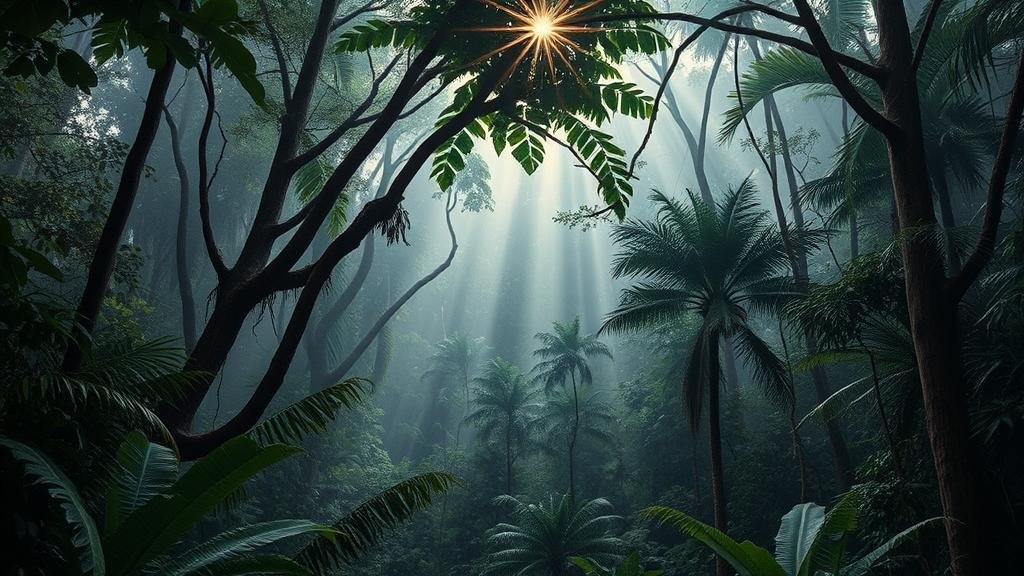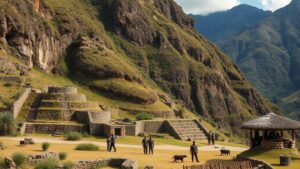Exploring the dense forests of the Amazon for the mythical “City of Light,” rumored in Indigenous lore.
Exploring the Dense Forests of the Amazon for the Mythical City of Light
The Amazon Rainforest, spanning over 5.5 million square kilometers, is often regarded as the lungs of the Earth, harboring diverse flora and fauna. Among the myriad of myths associated with this vast expanse, the legend of the City of Light is particularly captivating, drawing explorers, historians, and adventurers alike into its depths. This article will delve into the origins of this myth, the exploration of the Amazon, and the ongoing quest to uncover its secrets.
The Legend of the City of Light
The City of Light, known locally as El Dorado, stems from ancient Indigenous lore. Early European colonizers first heard the tales of a city paved with gold and treasures beyond imagination. These stories were likely inspired by real societies such as the Muisca and the Inca, who were known for their intricate metallurgy and significant wealth. The legend has transformed over the centuries, representing an unattainable paradise filled with light and abundance.
Historical Context of the Quest
The first significant European expedition that searched for El Dorado was led by Spanish conquistador Gonzalo Pizarro in the early 1540s. Pizarro journeyed into the Amazon basin, marching through treacherous terrain and hostile territory, ultimately covering around 1,000 kilometers. Unfortunately, this expedition ended in failure, leading to the loss of many lives due to disease, starvation, and conflict with Indigenous populations.
Also to Pizarro, adventurers like the Englishman Sir Walter Raleigh in the late 16th century and the Portuguese explorer Pedro Teixeira in the early 17th century made significant attempts, although with varying degrees of discovery and success.
Indigenous Contributions to the Myth
The Indigenous peoples of the Amazon have long held a wealth of knowledge regarding their environment and history. Their stories and beliefs have added layers to the myth of the City of Light. e cultures often describe advanced civilizations that are harmonious with nature, possessing deep spiritual connections to their surroundings. These accounts sometimes intertwine with the tale of El Dorado, suggesting that the City of Light might not purely be a physical place but also a metaphor for enlightenment and balance with the natural world.
Modern Explorations and Research
In the 21st century, advancements in technology have breathed new life into the search for the City of Light. Researchers and scientists utilize satellite imagery, LIDAR (Light Detection and Ranging), and other remote sensing technologies to uncover hidden archaeological sites in the dense rainforest. For example, in 2018, a study using LIDAR revealed a vast network of sophisticated earthworks and complex urban layouts in the Brazilian Amazon, suggesting that ancient civilizations thrived long before European contact.
These explorations showcase the vast, often hidden, history of the Amazon and challenge the long-held narrative of an untouched wilderness. As of 2021, researchers identified over 60,000 archaeological sites that suggest a thriving population that cultivated the land and constructed advanced infrastructures.
Environmental Concerns and Preservation
While the quest for the City of Light continues, it is vital to balance exploration with environmental stewardship. The Amazon faces severe threats from deforestation, illegal mining, and climate change, affecting both the ecosystems and Indigenous communities. Between 2020 and 2021, the Brazilian Amazon lost an estimated 13,000 square kilometers of forest due to such activities, urging a call to action to protect this invaluable resource.
- Invest in sustainable practices that do not harm the natural environment.
- Support Indigenous rights and their traditional ecological knowledge.
Real-World Applications of the Legend
The legend of the City of Light can serve as an educational tool, emphasizing the importance of cultural history and biodiversity. For conservationists, it is a reminder that the Amazon is not just a physical entity, but a repository of stories, knowledge, and life. By fostering appreciation for these multifaceted narratives, there is potential for building advocacy and support for preserving the Amazon for future generations.
Takeaways
The City of Light is an enduring symbol of human curiosity and the desire to discover the unknown. As we continue to explore the Amazon’s depths, it is essential to honor the wisdom of the Indigenous peoples and recognize the ecological significance of this ancient landscape.
- Respect Indigenous lore and integrate it into exploratory narratives.
- Use technology responsibly to unveil historical secrets without harming the ecosystem.
- Advocate for robust conservation efforts to safeguard the Amazons future.



